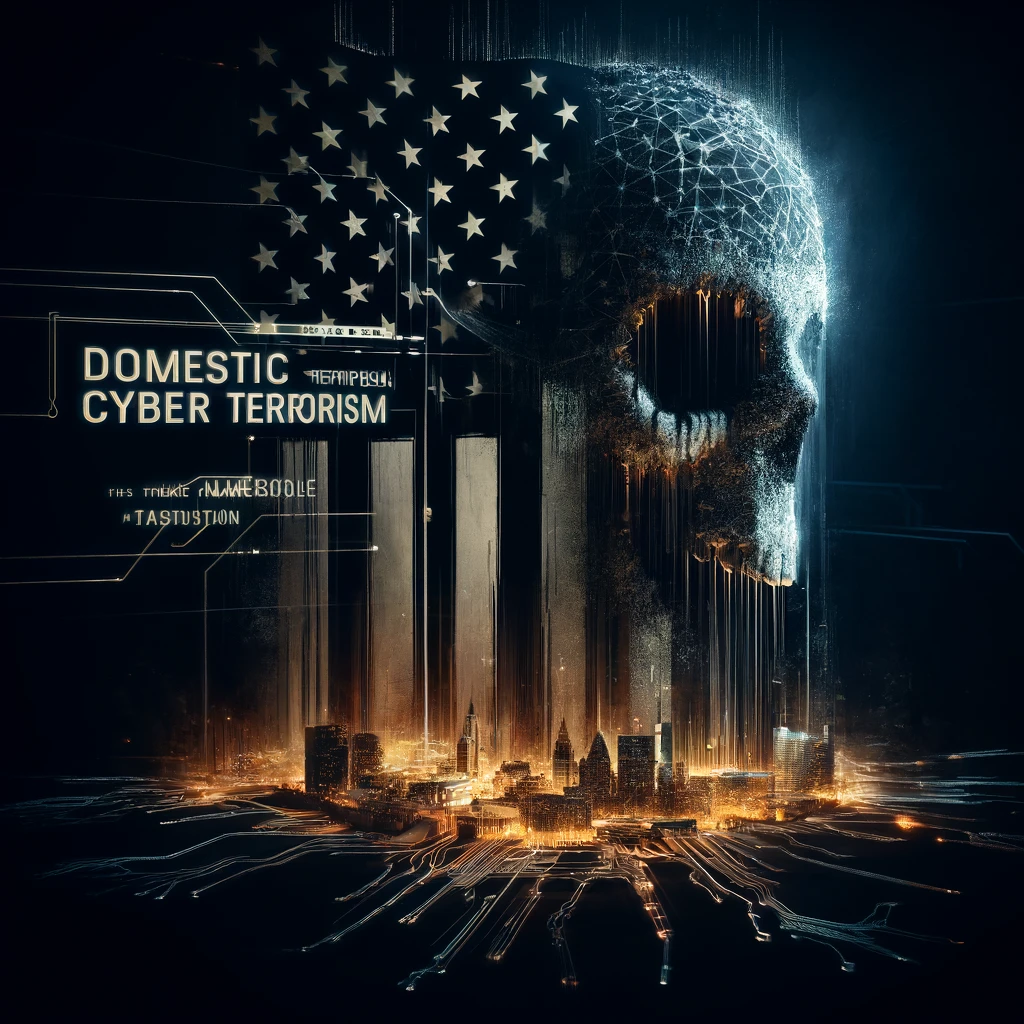
The specter of domestic terrorism has increasingly become a point of concern, evolving with the technological advancements of the age. In this particular scenario, the notion of domestic terror takes on a digital dimension, where the tools of terror are not bombs or weapons but malicious software and cyber tactics designed to undermine, intimidate, or coerce. The implication here is that an individual or group, motivated by a specific agenda or ideology, is utilizing technology to perpetrate acts of terror within their own country’s borders.

Imagine a situation where critical infrastructure, be it the electrical grid, water supply, or communication networks, falls prey to a well-orchestrated cyberattack. The impact would be immediate and potentially catastrophic, affecting millions of lives, sowing chaos, and instilling fear. Such an attack could disrupt daily life in profound ways, from blackouts to the loss of essential services, creating a ripple effect that extends far beyond the immediate physical damage.

The psychological ramifications of such cyber terrorism are profound. The knowledge that one’s safety and security can be compromised with a few keystrokes can alter the public psyche, leading to an atmosphere of fear and mistrust. The anonymity and facelessness of cyber threats make them even more unnerving, with potential attackers hidden behind screens, their motives and identities obscured.
In the realm of domestic terror, the use of digital tools adds a layer of complexity to the identification, prevention, and response strategies. Cyber terrorists, operating from within the nation’s borders, may exploit their intimate understanding of local systems, vulnerabilities, and the societal fabric to maximize the impact of their actions. Their motives can be as varied as their methods, ranging from political agendas to ideological beliefs, personal vendettas, or the desire to create chaos for its own sake.
The response to such threats requires a multi-faceted approach, combining technological prowess with psychological and sociological insights. Cybersecurity experts, law enforcement agencies, and intelligence services must collaborate closely, employing advanced surveillance, data analysis, and cybersecurity measures to preempt and counteract these threats. Public awareness and education also play a critical role, empowering individuals to recognize, report, and protect themselves against potential cyber threats.
Furthermore, addressing the root causes of domestic cyber terrorism involves a deep dive into the socio-political landscape, understanding the grievances or ideologies that fuel such extremism. It’s a delicate balance between enhancing security and preserving the civil liberties that form the bedrock of democratic societies. The challenge is to create resilient systems, both technical and social, that can withstand the onslaught of cyber terror without eroding the principles of freedom and openness.
In conclusion, the concept of domestic terrorism in the digital age is a stark reminder of the dual-edged nature of technology. As much as it has become an integral part of our lives, offering unprecedented opportunities for connection and growth, it also presents new vulnerabilities that can be exploited to spread fear and chaos. The battle against domestic cyber terrorism is not just a technical challenge but a societal imperative, requiring a united front that combines advanced technology, strategic foresight, and a deep commitment to the values of democracy and human rights.